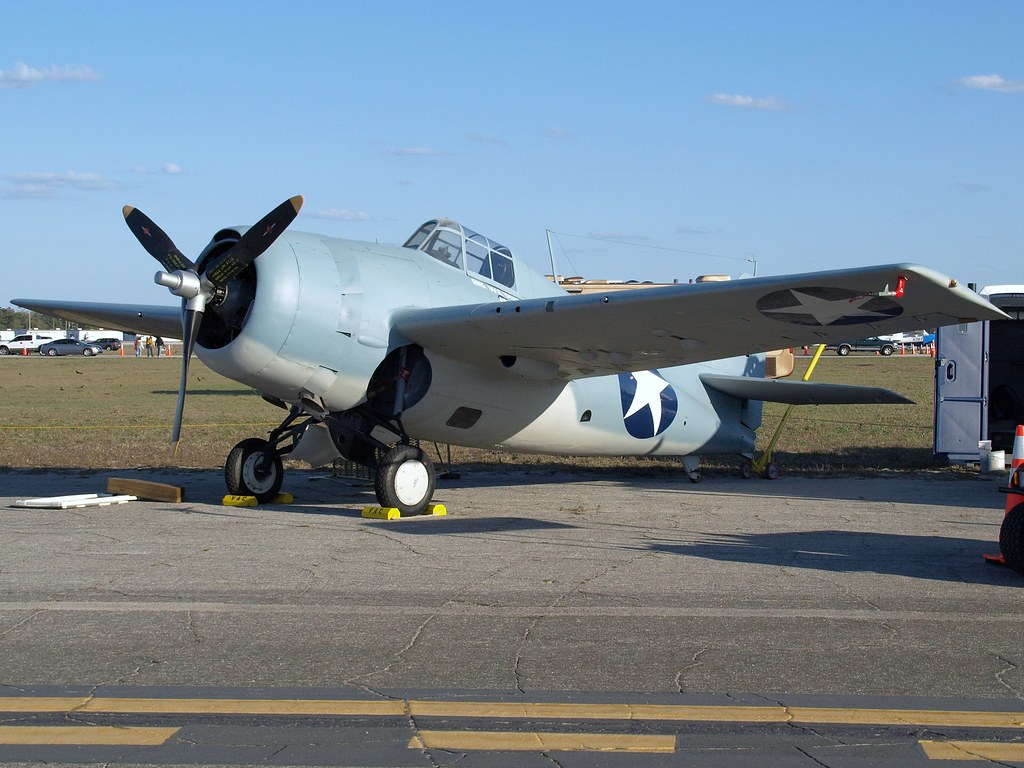The Grumman Wildcat is an American carrier-based fighter aircraft that began service in 1940 with the United States Navy, and the British Royal Navy where it was known as the Martlet. First used by the British in the North Atlantic, the Wildcat was the only effective fighter available to the United States Navy and Marine Corps in the Pacific Theater during the early part of the Second World War. The disappointing Brewster Buffalo was withdrawn in favor of the Wildcat and replaced as aircraft became available.
With a top speed of 318 mph (512 km/h), the Wildcat was outperformed by the faster 331 mph (533 km/h), more maneuverable at lower speed range, and longer-ranged Mitsubishi A6M Zero. However, the F4F’s ruggedness is superior to the maneuverable in the high speed range and dive, coupled with tactics such as the Thach Weave and high-side guns pass maneuver’s using altitude advantage, resulted in a claimed air combat kill-to-loss ratio of 5.9:1 in 1942 and 6.9:1 for the entire war.
Lessons learned from the Wildcat were later applied to the faster F6F Hellcat. While the Wildcat had better range and maneuverability at low speed, the Hellcat could rely on superior power and high speed performance to outperform the Zero. The Wildcat continued to be built throughout the remainder of the war to serve on escort carriers, where larger and heavier fighters could not be used.
 AirDotShow partners with the National Air, Sea and Space Foundation to give back through hosting STEM Education Programs to inspire the next generation to pursue careers in aerospace. AirDotShow also support the NASSF’s Cajun Scholarship founded to honor fallen Thunderbird pilot Stephen “Cajun” Del Bagno
AirDotShow partners with the National Air, Sea and Space Foundation to give back through hosting STEM Education Programs to inspire the next generation to pursue careers in aerospace. AirDotShow also support the NASSF’s Cajun Scholarship founded to honor fallen Thunderbird pilot Stephen “Cajun” Del Bagno

